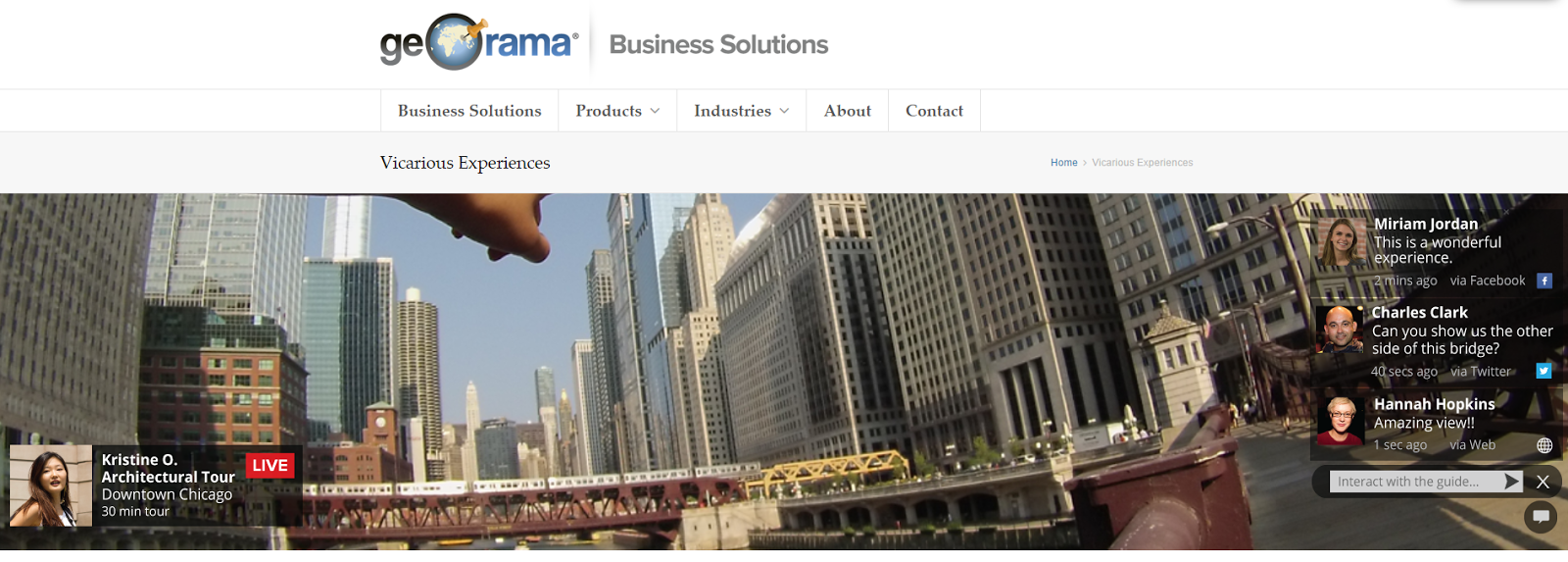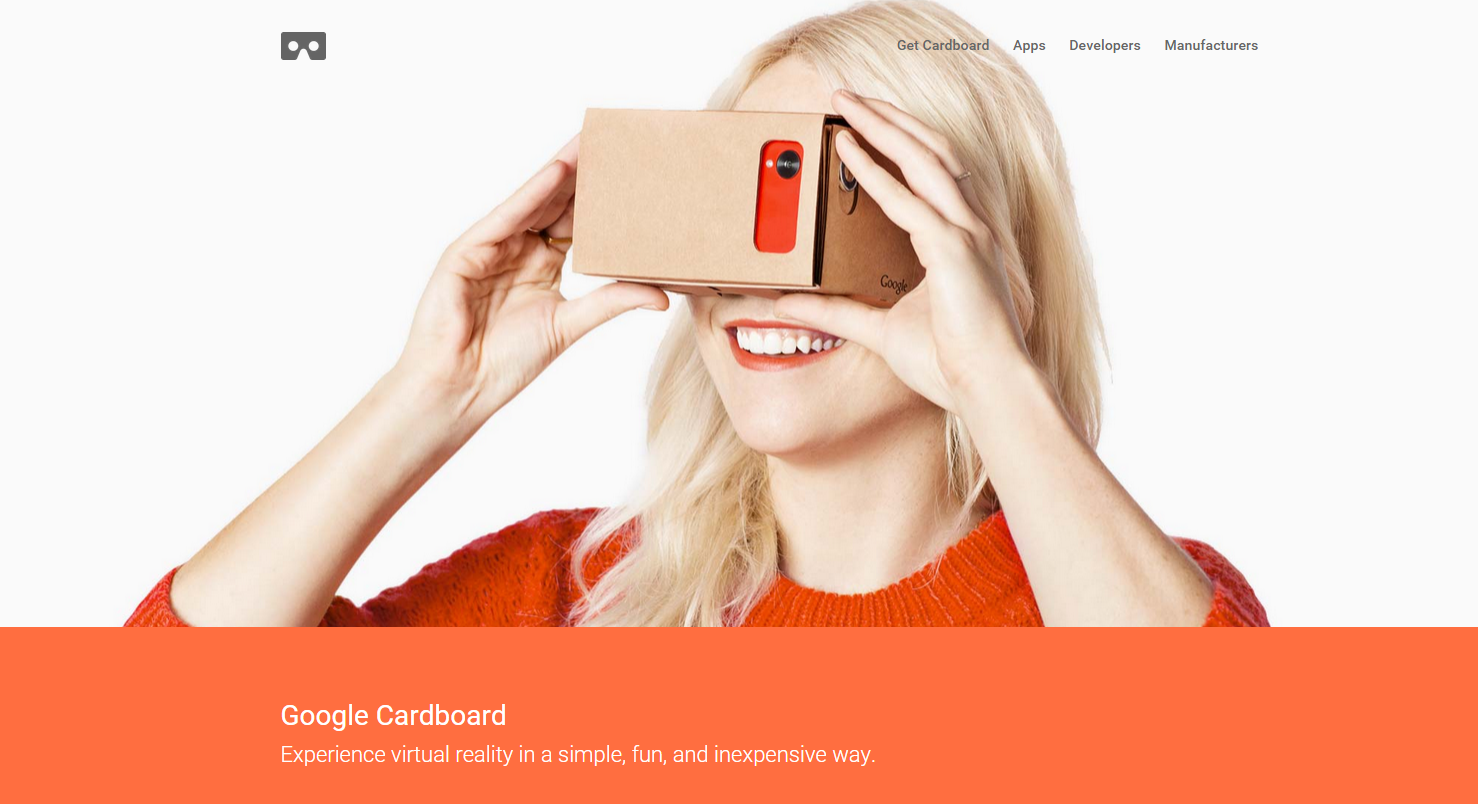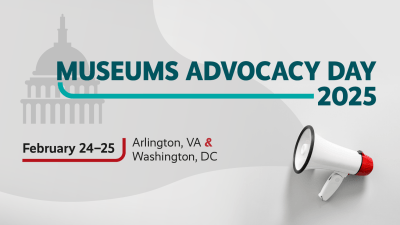
I hope you’ve had a chance to look at TrendsWatch 2015 (download your copy here.) In coming months, a host of guest bloggers will explore each theme in more depth. First up, CFM Council member Garry Golden, a professional futurist who works in a wide range of industry sectors including energy, transportation, learning and (fortunately for us) cultural institutions. This week Garry shares his recent experiences with two technologies related to this year’s themes: personalizing digital tours via the mediation of a human guide; and an affordable entre into one of the hottest areas of wearable technology—augmented reality headsets.
Two of the most hyped promises of the digital age include the ability to use video to visually share our experiences – and the idea of immersive virtual reality that transports us into a life-like digital environment. Unfortunately museum leaders have only been able to imagine how we might use these capabilities to expand access to exhibits and educational programs. New signals in the world suggest that the hype of video simulcasting and virtual reality soon may be more mainstream. Two recent experiences have shifted my thinking and elevated expectations on new ways museums might share experiences in the not-so-distant future.
Scaling-out the Guided Tour
Instagram has mainstreamed social sharing of images but nothing compares to the impact of live video and a trusted guide. A few weeks ago I was treated to a real-time tour of Chicago from the comfort of my home in Brooklyn. My host was a tour guide from Chicago-based Georama. The visual experience was from a chest-mounted camera that delivers what Georama terms vicarious experiences – the ability to virtually explore a destination in real-time via a human guide who is on the ground and able to answer questions from hundreds or thousands of people watching in real-time.
The company has figured out how to bring large audiences into a streaming mobile video over cellular towers. It sounds simple – but in reality it is quite a feat of engineering when we think of all the failed video chats we experience today sitting in a fixed location connected via Wi-Fi.
The opportunity for museums may be in elevating the role of human guides using video based experiences with chat-style interfaces for interaction. New tour capabilities can help reach new audiences – aging populations, individuals with physical disabilities, people abroad or students across the state or country—as well as supplementing the experience of traditional audiences before or after their physical visit. Museums can also start to imagine providing guided tours outside their gallery walls and in the real world where the stories of collection pieces may have connections. .
Skip over related stories to continue reading article
Georama is one of several players in what seems to be a larger effort to revive and reinvent the ‘tour guide’ as the center of experience design. In many ways the pieces are coming together around location-based content delivery, web broadcasting audio-video feeds and emphasis on storytelling strategies suited for this type of guided experience. Other companies starting to create tour-guide culture include Guidekick which is working with San Francisco’s de Young Museum. Another promising startup is Detour, which has Groupon founder Andrew Mason as part of the core team. Elizabeth featured yet another contender, Omnipresenz, in a recent post on this blog.
Looking at the convergence of trends, museums might soon imagine reliable ways of simulcasting visual experiences to hundreds or thousands of people able without worry of system hiccups that we see today. Real-time or recorded, the future of scaling out shared experiences and empowering human guides is here and an innovation platform for museums to explore.
Virtual Reality and the Inevitable Creepy Line conversation
The second experience happened when my Google Cardboard VR (Virtual Reality) arrived in the mail and transformed my thinking on how close VR was to mainstream applications. You may have noticed the buzz around Oculus Rift—a VR startup acquired by Facebook for $2billion in 2014. Google’s Cardboard VR platform is less well-known, but more accessible, providing a template that has been used by several low-cost manufacturers who will ship your headset for $20-40.
The ‘box’ design allows you to drop in your Android phone and experience a very impressive virtual reality experience. (There are ways to make this work with iOS devices as well.) Cardboard VR applications range from Google Earth-based city tours to roller coaster simulations.
Tapping my inner ethnographic researcher, I demo’d the Cardboard VR with more than twenty friends and family at a recent gathering. The ‘wow’ rate was 100% as people of all ages experienced flew over the Earth and down into Bryce Canyon. Faces that initially expressed a sense of ‘this looks creepy’ or ‘I get vertigo’ quickly shifted to smiles once they actually put on the headset. The most common reaction was the comment that ‘this will change how we learn.’
Google’s Cardboard VR is a hack job of VR technology compared to the hardware specific designs coming from Oculus, Samsung, Sony and now Apple. Yet the hack job was compelling enough to transform my thinking of how this conversation might unfold.
The immersive nature of VR is both compelling and a bit unsettling. It can absolutely transform learning and museum experiences as it delivers life-like experiences to people wearing these devices. Museums might use VR to expand access to exhibits or to feature collections that are not placed in the gallery. 3D scans of objects and collections can be easily explored and manipulated in VR.
There is also a “creepy line” conversation that museums will not be able to avoid. More than a few of my family members commented that many people will not want to take this headset off! If we thought staring at our televisions or mobile phones was distracting — wait for VR to test our desires and attention spans.
The dehumanizing risks are real but VR also creates a sense of pure wonder. How amazing would it be to put on a VR headset and tour any museum gallery in the world – or explore an isolated museum object in three dimensions? It might transform how many collection pieces are accessible to the world through VR platforms.
The market for VR will grow and expand into various hardware form functions. Some will be head-mounted display (HMD) ‘glasses’ that we wear and isolate us from the outside physical world. Other devices such as Microsoft’s HoloLens will be ‘augmented’ in nature and layers digital images on top of real world.
2015 – 2020: Scaling-up Tour Guides and VR?!
If we thought museums filled with patrons walking around with mobile phones and selfie-sticks was a challenging aspect of digital culture – how do we get ahead of the likely wave of VR and Augmented Reality wearables ahead?!
The promise of scaling out tour-guided video experiences and virtual reality seems to be moving out of the over-hyped stage and into a phase where museums can talk about the new risks, rewards and responsibility for their programs and outreach activities. To get the conversation going among your staff why not sign up for one of these tour-focused platforms or order a VR headset for your teams to explore?!
For a hands-on exploration of the future of museums and wearable technology, plan to visit CFM’s “Museum of the Future” in MuseumExpo at the annual meeting in Atlanta.











Museums are also instrumental to research programmes in this country. For many people undertaking research, museums provide an unrivalled wealth of information and resources as well as access to archives, scholars and highly trained professionals.
Virtual reality museum